Introduction to Ted Koch Engagement
Employee engagement is more than just a buzzword; it’s the heartbeat of thriving organizations. At the forefront of this movement is Ted Koch Engagement, an influential figure who has carved out a unique approach to fostering connection and commitment within teams. His philosophy isn’t just about improving productivity—it’s about creating an environment where employees feel valued and inspired every day.
In today’s fast-paced work culture, understanding how to engage your workforce effectively can set you apart from competitors. Ted Koch’s insights offer practical strategies that resonate with people at all levels of an organization. By exploring his methods, companies can unlock potential and drive innovation in ways they may have never imagined.
Join us as we delve into the world of Ted Koch engagement, exploring its impact on workplace dynamics and discovering actionable tips for implementation that your team will love. Whether you’re a seasoned manager or new to leadership, there’s something here for everyone who wants to bring out the best in their employees.
The Impact of Ted Koch’s Engagement Philosophy
Ted Koch’s engagement philosophy reshapes how we view workplace dynamics. It emphasizes the importance of collaboration and open communication among all employees.
By fostering an inclusive environment, organizations can tap into diverse perspectives. This diversity fuels creativity and innovation, driving business success.
Koch believes that engaged employees are more productive and motivated. When individuals feel valued, their loyalty to the company deepens. This connection translates into lower turnover rates and a stronger team culture.
Moreover, his approach encourages leaders to connect on a personal level with their teams. Understanding individual motivations allows for tailored strategies that resonate deeply across various roles within the organization.
The ripple effect of such an engagement strategy extends beyond immediate results. It cultivates a positive work environment where everyone thrives together, enhancing overall brand reputation in the market.
The Four Stages of Employee Engagement
Employee engagement unfolds in four distinct stages, each crucial for fostering a motivated workforce.
The first stage is **awareness**. Here, employees recognize their role and the company’s objectives. Understanding how they fit into the bigger picture sets the groundwork for deeper involvement.
Next comes **adoption**. In this phase, individuals start embracing their responsibilities with enthusiasm. They begin to take ownership of their tasks and contribute meaningfully to team goals.
The third stage is **activation**. Employees are not just participating; they are actively seeking ways to innovate and improve processes. This proactive approach leads to heightened productivity and creativity.
We reach **advocacy**. At this point, engaged employees become champions for the organization’s mission both inside and outside its walls. Their passion inspires others, creating a ripple effect that promotes overall workplace morale and success.
How Ted Koch Engages with Employees
Ted Koch takes a hands-on approach to employee engagement. He believes in creating open lines of communication where everyone feels heard.
One key method he employs is regular one-on-one meetings. These sessions allow employees to share their thoughts and concerns directly with leadership. It fosters trust and transparency within the team.
Koch also champions collaborative projects. By encouraging teamwork, employees build stronger relationships and feel more invested in their work outcomes.
Additionally, he promotes recognition programs that celebrate individual contributions. This acknowledgment boosts morale and motivates continued excellence among staff members.
His focus on personal development sets him apart as well. Offering training opportunities enhances skills while demonstrating a commitment to each employee’s growth journey.
Success Stories from Companies Using Ted Koch’s Engagement Strategies
Several companies have embraced Ted Koch’s engagement strategies with remarkable results. One notable example is a tech startup that faced high turnover rates. By implementing Koch’s framework, they increased employee satisfaction scores by over 30% within six months.
In the retail sector, a well-known brand adopted his methods to revitalize their workforce. They saw improved communication and collaboration among team members. This led to enhanced customer service and an increase in sales figures.
A nonprofit organization also transformed its culture through these engagement principles. Volunteers reported feeling more valued and connected to the mission, which resulted in higher retention rates and greater community impact.
These stories highlight how effectively Ted Koch’s strategies can cultivate lasting relationships between employees and employers across diverse industries.
Tips for Implementing Ted Koch’s Engagement Philosophy in Your Workplace
Start with open communication. Encourage employees to voice their thoughts and ideas freely. This builds trust and creates a collaborative environment.
Next, focus on recognition. Celebrate achievements, both big and small. A simple thank you can go a long way in boosting morale.
Foster growth opportunities by offering training programs or mentorships. Employees who feel invested in are more likely to stay engaged.
Encourage teamwork through group projects that allow different skills to shine. Collaboration fosters connections among colleagues, making work enjoyable.
Gather feedback regularly. Surveys or informal check-ins help you understand what works and what needs improvement within your engagement strategy. Adaptability is key for lasting impact!
Conclusion: The Importance of Employee Engagement and the Legacy of Ted Koch
Employee engagement is more than just a trend; it’s a vital component of a thriving workplace. Ted Koch’s approach has demonstrated that engaged employees are not only happier but also more productive.
His legacy lies in the transformative impact he had on organizations willing to embrace his philosophy. By prioritizing open communication and collaboration, companies can foster an environment where everyone feels valued.
The ripple effect of strong employee engagement extends beyond individual performance. It cultivates loyalty and drives innovation within teams, leading to long-lasting success for businesses.
As leaders reflect on Koch’s strategies, they find inspiration in creating workplaces that prioritize connection and purpose. This commitment benefits both employees and employers alike, ensuring sustainability in today’s competitive landscape.
Embracing Ted Koch’s insights could very well shape the future of workplace culture across industries worldwide.
FAQs
What is Ted Koch’s engagement philosophy?
Ted Koch’s engagement philosophy centers on creating a workplace where employees feel valued, connected, and motivated. He emphasizes the importance of open communication, recognition, and opportunities for personal growth.
How can companies benefit from implementing Ted Koch’s strategies?
Companies that adopt Ted Koch’s engagement strategies often see higher employee morale, increased productivity, and lower turnover rates. Engaged employees are more committed to their work and contribute positively to the company culture.
Are there specific tools or programs associated with Ted Koch’s approach?
While there aren’t specific tools tied exclusively to Ted Koch’s methods, many organizations utilize regular feedback systems, employee recognition platforms, and professional development programs in alignment with his principles.
Can small businesses use these engagement techniques effectively?
Absolutely! Small businesses can leverage Ted Koch’s techniques by fostering close relationships between management and staff. Tailoring approaches based on individual needs helps build strong connections regardless of company size.
What role does leadership play in employee engagement according to Ted Koch?
Leadership plays a crucial role in shaping an engaging workplace environment. Leaders who actively listen to their teams and prioritize their well-being create an atmosphere conducive to high levels of engagement.
Is it difficult to maintain long-term employee engagement using these strategies?
While maintaining long-term employee engagement requires ongoing effort—like continuous feedback loops and adapting initiatives—it becomes easier when the foundational principles of respect and recognition are ingrained in the company culture.
By incorporating elements from Ted Koch’s philosophies into your organization’s practices, you pave the way for a more engaged workforce ready to drive success together.











